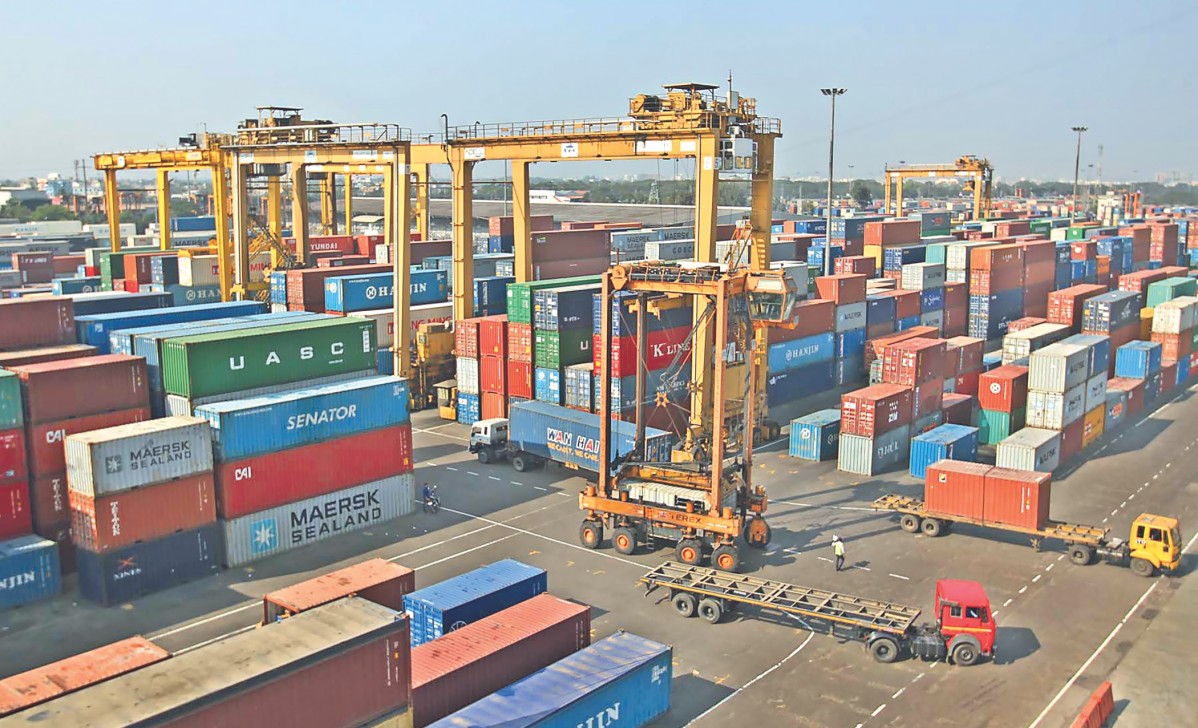Growth slowest in seven years

Chittagong port posted a 3.32 percent growth in container handling in 2019, the slowest in seven years, pointing to a slowdown in economic activities.
Port users have blamed Bangladesh’s foreign trade being sluggish for the lower growth in the port’s annual container throughput.
The port handled around 2.89 million TEUs (twenty-foot equivalent units) of containers, including import, export and empty ones, in the just-concluded year, up from 2.80 million TEUs in the year before.
It handled 2.60 million TEUs in 2017 and 2.35 million TEUs in 2016. The country’s largest seaport port recorded a 9 percent growth in 2018, 9.36 percent in 2017, and 15.94 percent in 2016.
However, the data from the Chittagong Port Authority (CPA) on Wednesday showed that the port handled 3.09 million TEUs of containers last year, up 6 percent year-on-year.
But the figure was finalised by taking into account the containers that were handled by the Pangaon Inland Container Terminal (ICT), Kamalapur Inland Container Depot and 19 private ICDs in Chattogram.
The containers bound for the Pangaon ICT, Kamalapur ICD and the private ICDs are first unloaded at the Chattogram port before they are sent to their final terminals and inland depots. The port data considered the containers handled by these points twice.
“Though year-on-year growth in container handling was a bit lower last year, the port still maintained positive growth,” CPA Secretary Md Omar Faruk said.
“This is not surprising at all,” said Zahid Hussain, former lead economist of the World Bank’s Dhaka office.
“Exports and imports have both declined. These are the fundamentals which drive the growth of container handling. There is indeed a slowdown in the economy.”
Different types of commercial items, machinery, commodity, chemical products and all sorts of industrial raw materials except those used in cement and ceramics sector are imported through containers while export-oriented items are solely carried through containers.
“The country’s major export-earner readymade garment sector has been experiencing negative growth in the last few months and it was also reflected in the port’s annual container throughput,” said Nasir Uddin Chowdhury, chairman of the standing committee on port and shipping of the Bangladesh Garment Manufacturers and Exporters Association.
Overall earnings from the merchandise exports between July and November fell 7.59 percent to $15.77 billion. Lower shipment of apparel items, which accounted for more than 80 percent of the national exports, contributed to the decline.
Between July and November, garment exports declined 7.74 percent to $13.08 billion, data from the Export Promotion Bureau showed.
Earnings from the merchandise exports rose only 2 percent in the first 11 months of 2019, according to data from the central bank. Imports fell less than 1 percent between January and September.
Though the port faced container and vessel congestions on various occasions throughout the year, the situation has improved after six gantry cranes were installed in the second half of the year.
The port’s capacity and efficiency will increase further in 2020 with the purchase of a few more gantry cranes and through the implementation of some of the expansion projects such as Patenga Container Terminal and the building of yard facilities in the Bay Terminal site, Faruk said.
